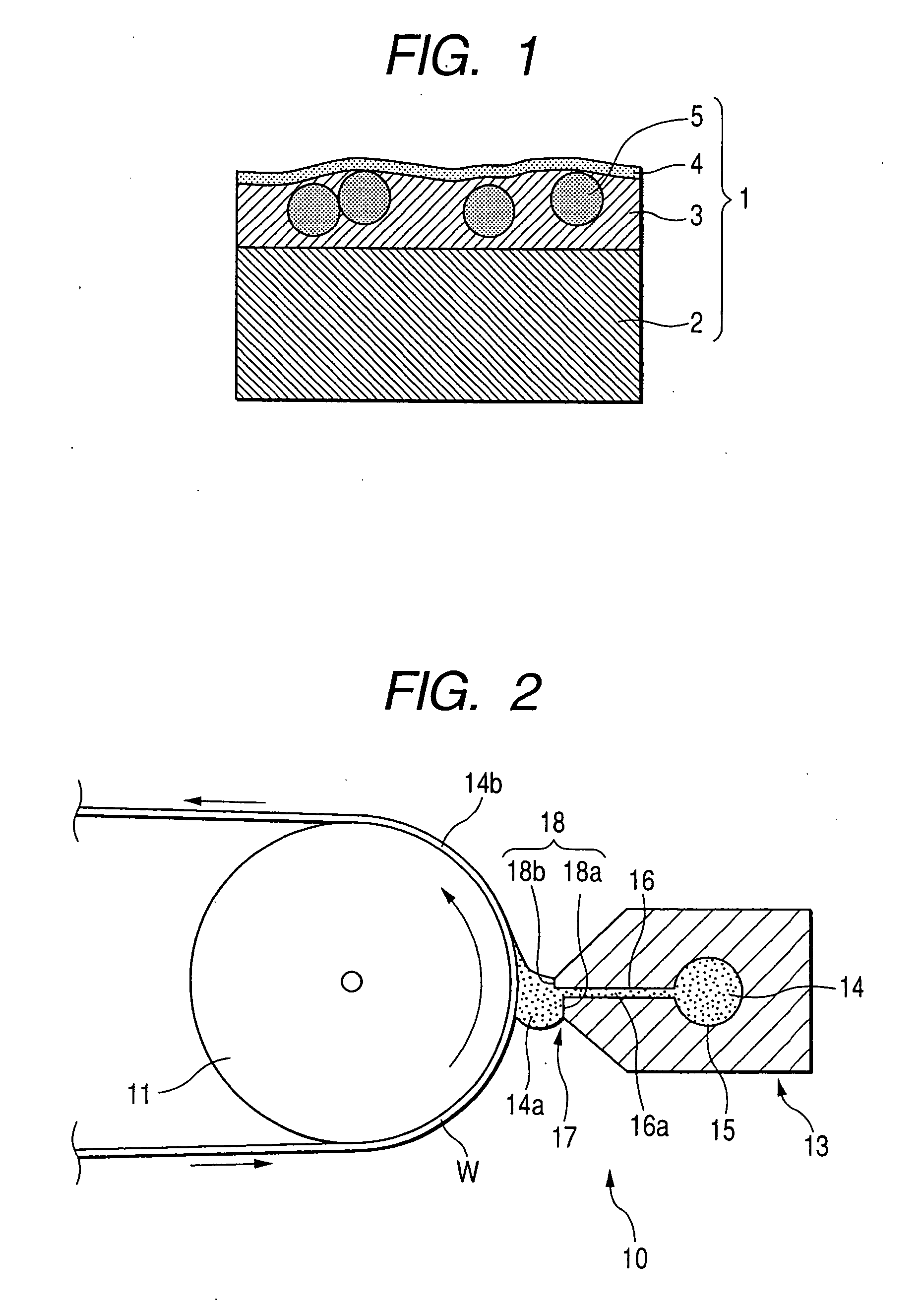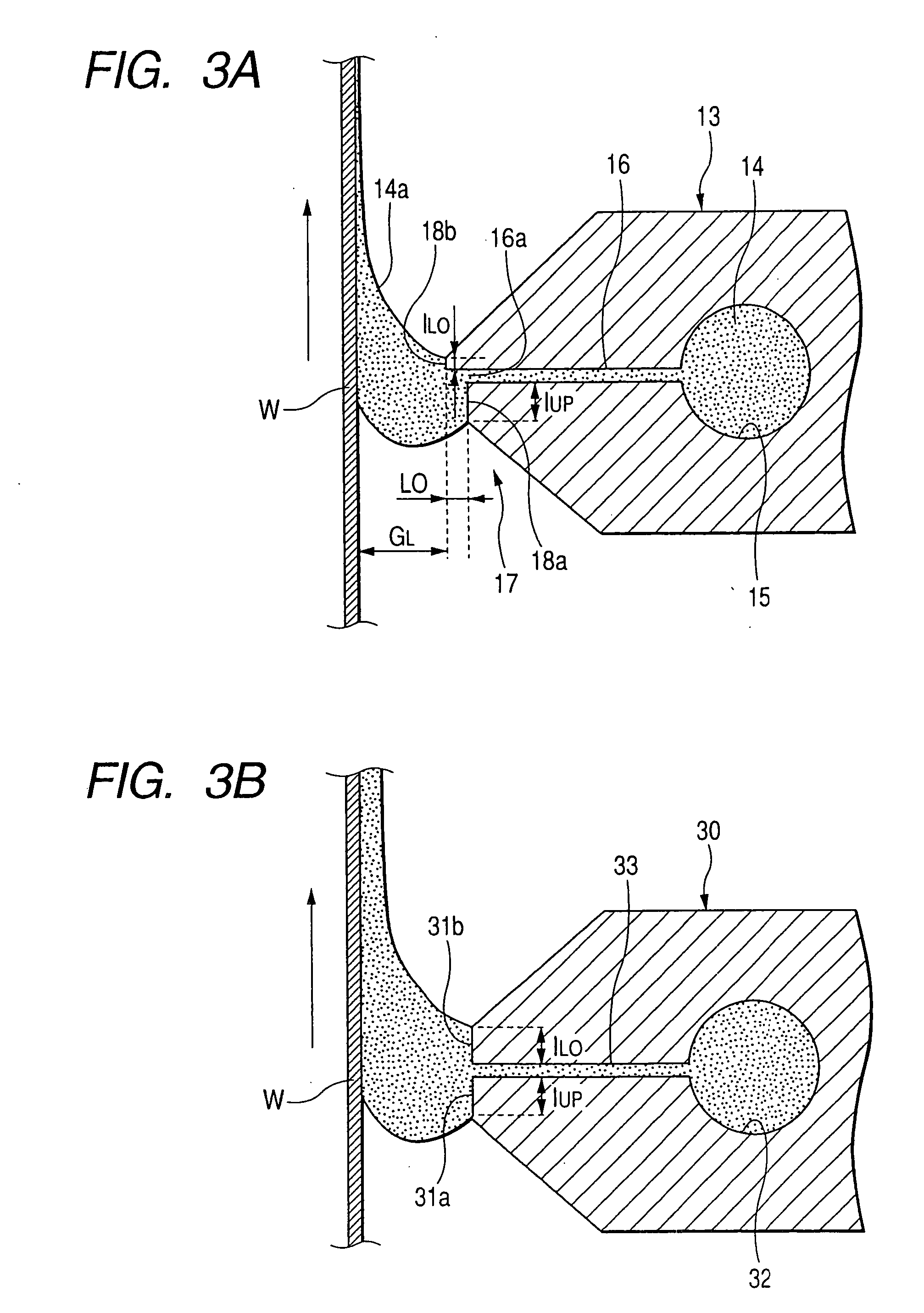Method of Producing Light-Scattering Film, Polarizing Plate Comprising Light-Scattering Film and Liquid Crystal Display Device Comprising the Polarizing Plate
a technology of light-scattering film and polarizing plate, which is applied in the direction of polarizing elements, instruments, transportation and packaging, etc., can solve the problems of too high sedimentation rate of light-transmitting particulate material, and no method of producing light-scattering film having uniform in-plane scattering properties, etc., to achieve high productivity
- Summary
- Abstract
- Description
- Claims
- Application Information
AI Technical Summary
Benefits of technology
Problems solved by technology
Method used
Image
Examples
example 1
(1) Spreading of Light-Scattering Layer
[0348] The coating solution for light-scattering layer A was spread over a triacetyl cellulose film having a thickness of 80 μm (TAC-TD80UF”, produced by Fuji Photo Film Co., Ltd.) using a die coating method involving the use of the following device configuration under coating conditions. The coating layer was dried at 30° C. for 15 second and then at 90° C. for 20 second, and then irradiated with ultraviolet rays at an illuminance of 400 mW / cm2 and a dose of 90 mJ / cm2 using a 160 W / cm air-cooled metal halide lamp (produced by EYE GRAPHICS CO., LTD.) while the air in the system was being purged with nitrogen to undergo curing so that an anti-glare light-scattering layer was formed to a thickness of 6 μm. The film was then wound. Thus, Example 1-1 was effected.
[0349] Light-scattering layers were prepared in the same manner as mentioned above except that the light-scattering layer coating solution A was replaced by the light-scattering layer co...
example 2
[0366] A triacetyl cellulose film having a thickness of 80 μm (TAC-TD80U, produced by Fuji Photo Film Co., Ltd.) which had been dipped in a 1.5 mol / l aqueous solution of NaOH kept at 55° C. for 2 minutes, neutralized and rinsed and the light-scattering film (Examples 1-1 and 1-2) and anti-reflection film (saponified; Examples 1-3 to 1-12) prepared in Example 1 were bonded to the both sides of a polarizer prepared by adsorbing iodine to a polyvinyl alcohol which was then stretched to protect the polarizer. Thus, a polarizing plate was prepared. These polarizing plates were each used to prepare a transmission type TN liquid crystal display device having a light-scattering layer or anti-reflection layer disposed on the outermost layer thereof. These transmission type TN liquid crystal display devices caused no reflection of external light and thus exhibited an excellent viewability. In particular, the transmission type TN liquid crystal display devices having an anti-reflection film di...
example 3
[0367] As each of the protective film to be disposed on the liquid crystal side of the polarizing plate on the viewing side and the protective film to be disposed on the liquid crystal side of the polarizing plate on the backlight side of the transmission type TN liquid crystal cell of Example 2 there was used a viewing angle widening film (Wide View Film SA 12B, produced by Fuji Photo Film Co., Ltd.). As a result, a liquid crystal display device having very wide horizontal and vertical viewing angles, an extremely excellent viewability and a high display quality was obtained.
[0368] Using a Type GP-5 goniophotometer (produced by MURAKAMI COLOR RESEARCH LABORATORY), the film disposed perpendicular to incident light was then measured for scattered light profile in all the directions. From this profile was then determined the intensity of scattered light at an angle of 30° with respect to an emission angle of 0°. Examples 1-2, 1-4 and 1-9 to 1-12 (Samples comprising the light-scatteri...
PUM
| Property | Measurement | Unit |
|---|---|---|
| particle diameter | aaaaa | aaaaa |
| land length | aaaaa | aaaaa |
| land length | aaaaa | aaaaa |
Abstract
Description
Claims
Application Information
 Login to View More
Login to View More - R&D
- Intellectual Property
- Life Sciences
- Materials
- Tech Scout
- Unparalleled Data Quality
- Higher Quality Content
- 60% Fewer Hallucinations
Browse by: Latest US Patents, China's latest patents, Technical Efficacy Thesaurus, Application Domain, Technology Topic, Popular Technical Reports.
© 2025 PatSnap. All rights reserved.Legal|Privacy policy|Modern Slavery Act Transparency Statement|Sitemap|About US| Contact US: help@patsnap.com



